Introduction
Ciba, a beloved traditional Chinese delicacy, holds a cherished place in culinary heritage, particularly in regions like Sichuan, Hunan, and Guizhou. This sticky, chewy treat, made primarily from glutinous rice, is a symbol of unity, prosperity, and festivity, often enjoyed during Lunar New Year celebrations, weddings, and family gatherings. Crafting Ciba at home is a labor of love, blending simplicity with meticulous technique. This article delves into the history, cultural significance, and detailed process of making Ciba, ensuring even novice cooks can master this age-old recipe.
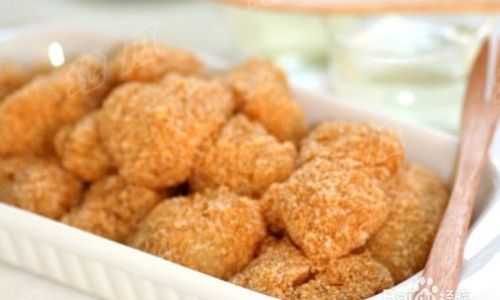
A Brief History and Cultural Significance
The origins of Ciba trace back over a millennium, rooted in agricultural traditions where glutinous rice symbolized abundance. Its name, derived from the Chinese words ci (to pound) and ba (cake), reflects the labor-intensive method of pounding cooked rice into a cohesive mass. Historically, Ciba was prepared during winter solstice and New Year as an offering to ancestors, believed to bring good fortune. Today, it remains a staple at festivals, embodying family togetherness—often shaped into rounds to signify completeness or stuffed with sweet fillings for joyous occasions.
Ingredients and Tools
Creating authentic Ciba requires minimal ingredients but precise execution. Here’s what you’ll need:
- 500g glutinous rice (sticky rice): Opt for short-grain varieties for optimal stickiness.
- Water: For soaking and steaming.
- Salt: A pinch to enhance flavor (optional).
- Fillings (optional): Red bean paste, sesame seeds, or crushed peanuts mixed with sugar.
- Coating: Toasted soybean flour, shredded coconut, or crushed peanuts to prevent sticking.
Tools:
- A large bowl for soaking.
- A steamer basket or bamboo steamer.
- A mortar and pestle (traditional) or a food processor (modern shortcut).
- A wooden mallet or rolling pin (for pounding).
- Plastic wrap or damp cheesecloth.
- A non-stick pan for cooking (if frying).
Step-by-Step Preparation
Soaking the Rice
Begin by rinsing the glutinous rice under cold water until the water runs clear. This removes excess starch and debris. Transfer the rice to a bowl and cover with water, ensuring at least 2 inches of liquid above the grains. Soak for 6–8 hours (or overnight), allowing the rice to absorb moisture and soften. Drain thoroughly using a fine-mesh sieve.
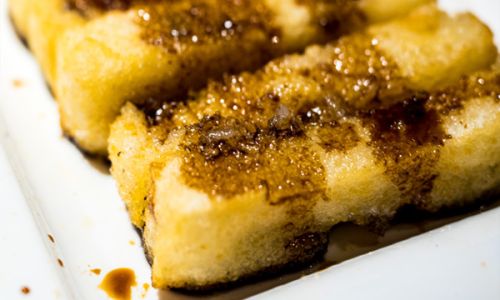
Steaming to Perfection
Line a steamer basket with parchment paper or a clean kitchen towel to prevent sticking. Spread the drained rice in an even layer and steam over medium-high heat for 30–40 minutes. Halfway through, gently fluff the rice with a fork to ensure even cooking. The rice is ready when it turns translucent and tender, with no hard centers.
The Pounding Process: Tradition vs. Convenience
Traditional Method (Stone Mortar):
Transfer the steamed rice to a large stone mortar. Using a wooden pestle, pound the rice vigorously, alternating between quick, forceful strikes and folding the mixture to ensure even mashing. This process, requiring strength and rhythm, takes 20–30 minutes. The goal is to break down the rice grains into a smooth, elastic paste without over-pounding, which can make the Ciba tough.
Modern Shortcut (Food Processor):
For a quicker alternative, place the steamed rice in a food processor. Pulse in short bursts, scraping down the sides frequently. Add 1–2 tablespoons of water if the mixture seems dry. Process until a sticky dough forms (5–7 minutes). While convenient, this method may yield a slightly less chewy texture.
Shaping and Stuffing
Once the dough reaches a smooth, stretchy consistency, transfer it to a lightly oiled work surface. Knead gently for 2–3 minutes to release air pockets. Divide the dough into golf ball-sized portions (about 30g each).
For Stuffed Ciba:
Flatten a dough portion into a 3-inch circle. Place 1 teaspoon of filling (e.g., red bean paste) in the center. Gently pinch the edges to seal, rolling the ball between your palms to smooth.
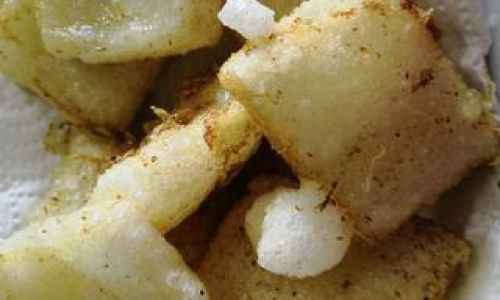
For Plain Ciba:
Roll the dough into smooth balls or flatten into discs. Dust your hands with coating (e.g., toasted soybean flour) to prevent sticking.
Cooking Methods
Pan-Frying:
Heat a non-stick pan over medium heat. Lightly coat with oil. Place the Ciba pieces in the pan, leaving space between them. Cook for 2–3 minutes per side until golden and slightly puffed. Serve warm with honey or brown sugar syrup.
Boiling:
Bring a pot of water to a rolling boil. Gently lower the Ciba pieces into the water. Cook for 5–7 minutes until they float. Drain and coat in a mixture of sugar and sesame seeds.
Deep-Frying (Crispy Variation):
Heat oil in a deep fryer or heavy-bottomed pot to 350°F (175°C). Fry the Ciba for 2–3 minutes until golden and crispy. Drain on paper towels and serve with a sprinkle of salt or powdered sugar.
Tips for Perfect Ciba
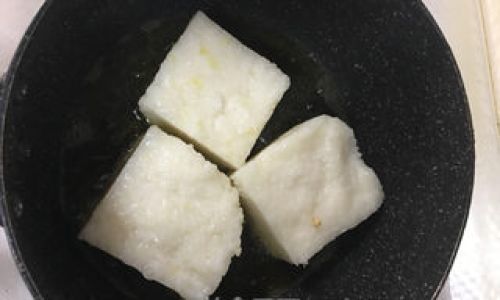
- Consistency is Key: The dough should be sticky but not overly wet. If too dry, knead in 1 teaspoon of water at a time. If too wet, dust with glutinous rice flour.
- Temperature Control: Work quickly while shaping, as the dough stiffens as it cools. Keep unused portions covered with plastic wrap.
- Storage: Cooked Ciba can be refrigerated for 3–4 days or frozen for up to a month. Reheat by steaming or microwaving with a damp paper towel.
Regional Variations and Modern Twists
Ciba’s versatility shines through regional adaptations:
- Sichuan Style: Spicy Ciba dusted with chili flakes and Sichuan peppercorn.
- Guizhou Twist: Stuffed with black sugar and wrapped in bamboo leaves.
- Modern Fusion: Ciba brownies (mixed with cocoa powder) or Ciba sushi rolls.
Troubleshooting Common Issues
- Dough Too Sticky: Dust hands and work surface with glutinous rice flour.
- Tough Texture: Over-pounding or over-kneading can toughen the dough. Stop once it’s smooth and elastic.
- Uneven Cooking: Ensure even steaming by stirring halfway and using a single layer in the steamer.
Cultural Etiquette and Serving Suggestions
Ciba is traditionally shared family-style, with diners tearing pieces to symbolize unity. Pair it with:
- Chinese Tea: Oolong or jasmine tea cuts through the richness.
- Fermented Rice Wine (Jiuniang): A complementary beverage in cold months.
- Fresh Fruit: Sliced oranges or persimmons for a refreshing contrast.
Conclusion
Crafting Ciba is more than a culinary endeavor—it’s a connection to centuries of tradition. While labor-intensive, the process rewards with a chewy, aromatic treat that embodies joy and togetherness. Whether enjoyed plain, stuffed, or fried, Ciba remains a testament to the enduring magic of simple ingredients transformed by patience and skill. As you master this recipe, you carry forward a legacy, one sticky, delightful bite at a time.
Final Thoughts for Aspiring Ciba Makers
Don’t be discouraged by initial imperfections. Even if your first batch is lopsided or slightly undercooked, the act of creating Ciba is a celebration of culture and creativity. Experiment with fillings, coatings, and shapes to make it uniquely yours. Share your creations with loved ones, and savor the pride of preserving a timeless culinary art.
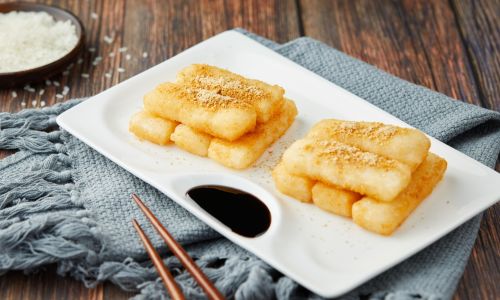
Word Count: 1985
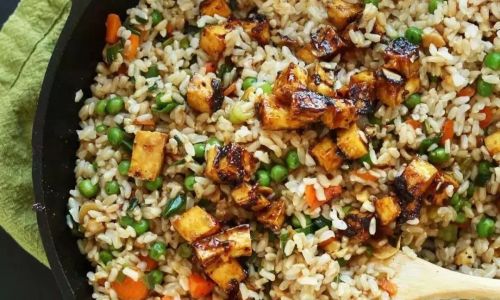

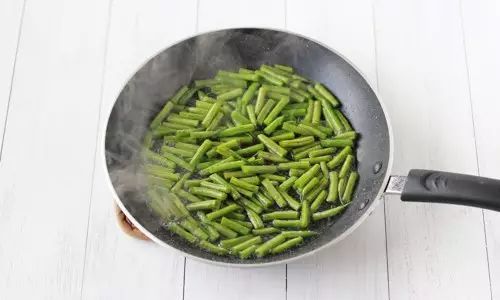

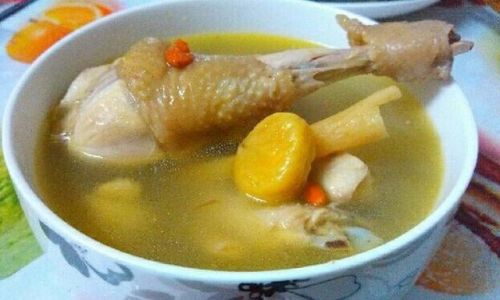
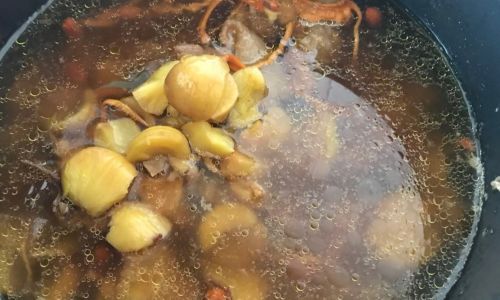
0 comments